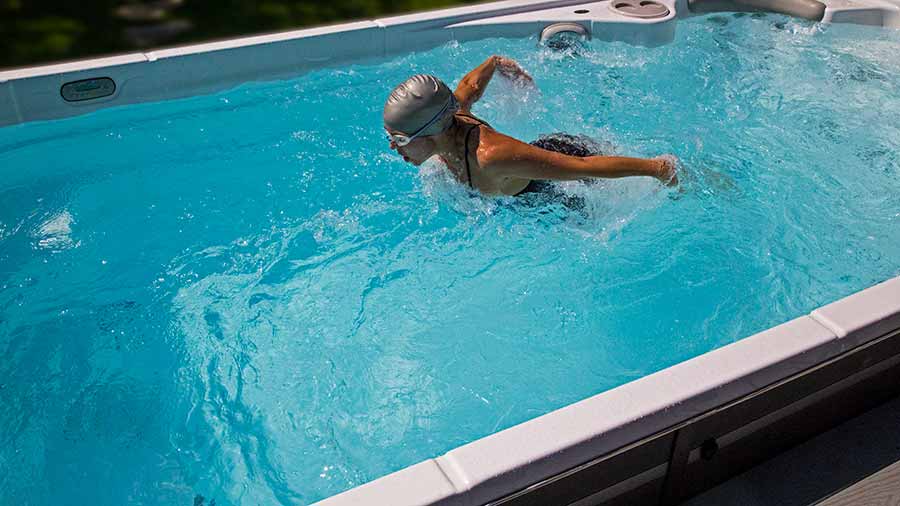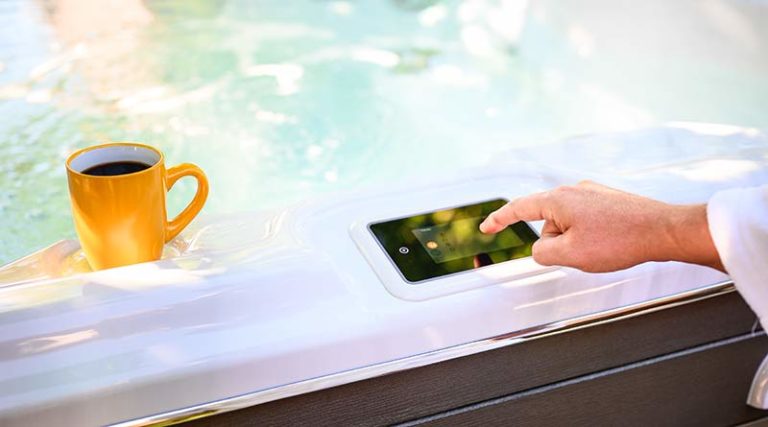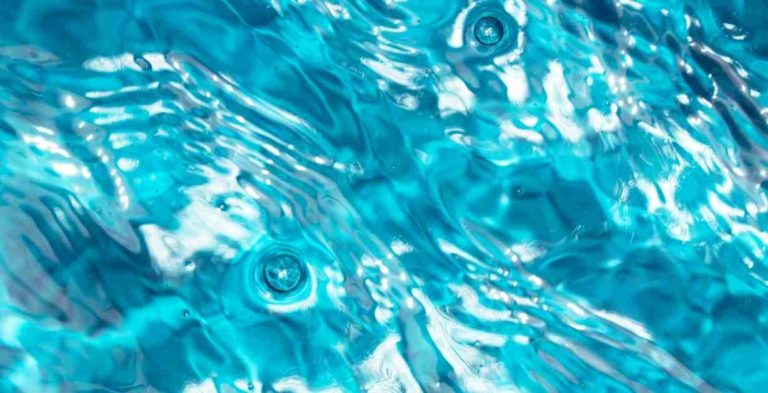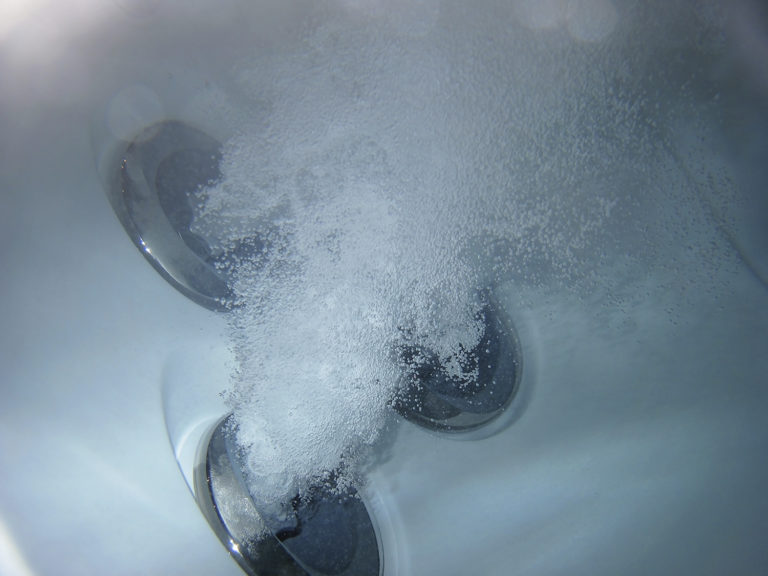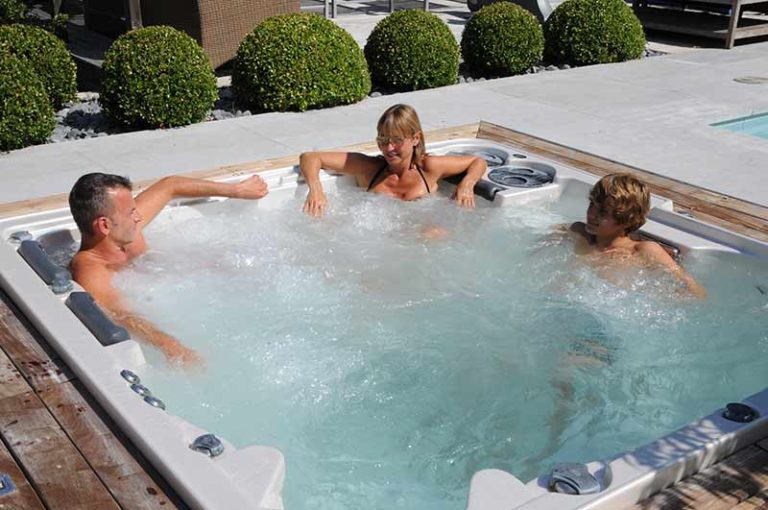Are Swim Spas High Maintenance?
Introduction
Water-based relaxation and exercise is notoriously good for the body; buoyancy lessens potentially harmful impact on the joints and yet still results in substantial physical benefits.
Swim spas offer many similar benefits and functionalities as a traditional swimming pool, but how do they compare like for like?
And how time-consuming and costly is it to own one?
The essential aspects of swim spa ownership are daily and weekly water testing with chemical dosing, filter maintenance, periodic draining and replacement of water – typically every 3-4 months – together with the cost of continuous heating and circulation of water through the filtration systems.
Swimming pools have typically been the only option for swimming and other water-based exercise and whilst their appeal may be as strong as ever, there are two unavoidable facts, they are expensive to build and to maintain. Build costs for a basic, outdoor in-ground garden swimming pool (approx 50 M³ of water) start at approximately £35,000 (UK prices ) and they incur a maintenance cost (including water treatment, heating and power) of £500 – £750 per month, whilst the pool is in use during the warmer spring and summer months.
For this reason amongst others, swim spas have become increasingly popular. Typically a swim spa offers both the relaxing aspects of a hot tub together the opportunity to more energetic pursuits, only possible in a traditional swimming pool before now, such as half an hour of front crawl!
Swim spas can be used year-round, as is the case with hot tubs, but in the case of a swimming pool the season is limited in the UK to the late-spring and summer months.
Let’s take a look at the most common questions asked by prospective swim spa owners.
Are swim spas hard to maintain?
Day-to-day care for a swim spa is broadly the same as a hot tub, the main difference being that cleaning filters will require more time on your swim spa – the number of filters vary, the larger dual-temperature swim spas have more than smaller ‘play’ spas, for example.
Inevitably, neglecting to look after your spa water will lead to problems down the line, and this can prove costly, time-consuming and frustrating if the issue proves difficult to solve. For this reason only we strongly urge owners to meticulously maintain their daily, weekly and monthly testing programmes.
Filter cleaning, maintenance and replacement will need to be carried out, just as it would on a hot tub. These are simple and straightforward procedures to carry out; filter cleaning can be a quick as 20 minutes with the right products.


Is it expensive to run a swim spa?
Swim spas vary in size, and typically hold between 6,000 litres and 8,000 litres. As there will be a need to replace this water periodically, this cost must be taken into account.
However when we compare this to the 50,000 litres (50 M³) that a small swimming pool will hold, this could be deemed excellent value given the extensive functionality a swim spa brings.
At the time of research (November 2020), hot tubs in the UK cost a little over £1 a day to run whereas swim spas cost between £3 and £5 a day, depending on how heavily it’s used.
As swim spas are designed for exercise, the ideal temperature of the water is set slightly lower than that of a hot tub (typically a hot tub water is set to between 36º and 38º). Dual-temperature swims spas, however, have both a hot tub area and a swim section, therefore as the name suggests, you can set the appropriate temperatures for each end.
What is the maintenance on a swim spa?
Regular water testing and appropriate chemical dosing must be carried out, and this includes asking your bathers to take a shower before using your swim spa. This process is the same as the process carried out for a hot tub, apart from quantities.
You’d be surprised to learn how many pollutants enter the water in the form of body oils and lotions, perfumes and deodorants. Reducing these pollutants as much as possible will lessen the work your primary sanitiser needs to do (Chlorine or Bromine).
Using a stain and scale inhibitor is recommended on commissioning the swim spa, as this will help preserve the condition and operation of the internal pipework, jets and pump mechanics.
Filter cleaning (weekly) and periodic filter replacement would need to be carried out also.
How often do you change water in a swim spa?
You can expect to drain and replace your swim spa water every 3-4 months for a spa that is used moderately.
The key to getting the most of your swim spa water water before drain down is to ensure regular (daily) water testing, weekly filter cleaning and ensuring a weekly shock dose (preferably non chlorine shock) will help improve the water balance.
Adding a 25g Chlorine Dioxide tablet fortnightly will remove internal biofilms and other pollutions too.
Showering before entering the water will reduce a considerable amount of pollution from the bather (approximately 60% of bather surface pollution will be removed) and it will therefore not added to the swim spa water!
Adopting the above will help ensure the water will go full-term and hopefully maybe extend time-frame further.
How often do you add chlorine to a swim spa?
The key is to the test the water daily. Swim spas that are used more frequently for extended sessions by competitive athletes will have a higher demand for chlorine (sanitiser) whereas more modest usage will see a much lower demand.
Some swim spas will have an erosion feeder fitted enabling chlorine (or bromine) tablets to be added. The flow of the water over the tablets slowly dissolves the tablets and creates a chlorine reading in the water. These erosion feeder will have a simple flow mechanism that can be either opened or closed to increase or decrease the amount of chlorine (or bromine) in the water.
When adding Chlorine granules, always re-test the water after application. As little as 2g of Chlorine granules will raise the free chlorine by 1PPM in 1,000 of water, therefore to raise free chlorine by 1PPM in a swim spa (typically) 5000 litres of water you will need to 10g of Chlorine granules.
The reading you are aiming for is 2 – 3 parts per million (PPM) of free chlorine.
Are swim spas hygienic?
Every swim spa – and hot tub – is as hygienic as the water care maintenance it receives.
A shortcut that many bathers tend to skip is showering before using the swim spa, which will cause additional pollutants to enter the water, such as body oils, skin flakes, etc. If primary sanitiser levels, TA (Total Alkalinity) and pH is regularly measured, appropriate chemicals applied when necessary and the water is replaced regularly – typically every 3-4 months – then there should be no hygiene issues.
We would also recommend a weekly application of surface cleaner around the waterline, as this will remove the build-up of oils, etc., that tend to attach themselves to the waterline. This build-up will look unsightly, spoiling the appearance of your swim spa and, if left, will harbour bacteria. Use this product sparingly, ensuring you use one cloth to apply the cleaner and a separate one to wipe it away. Note of caution: never wring out the cloths into the swim spa water!
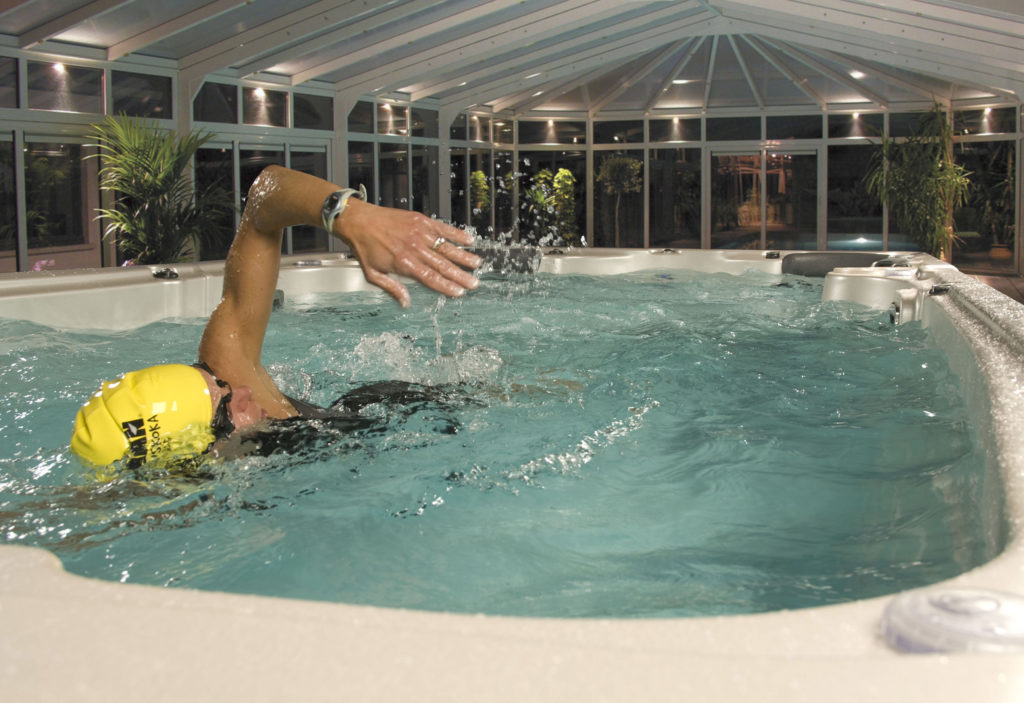

How do you shock a swim spa?
The process for shocking a swim spa is exactly the same as that of a hot tub – read our article here for more information.
Shock dose weekly with Non Chlorine Shock, firstly ensuring bathers have left the water. If there is a dirty foam soon forms after the application, this would suggest a build-up of pollution in the water (from the bathers). To reduce this from occurring, ensure weekly shock dosing is carried out.
Many swim spa owners are also seeing the benefit of adding a 25g Chlorine Dioxide tab to the water every fortnight, as this will help to eliminate hard-to-solve pollution issues, such as biofilms found on internal surfaces of the swim spa.
What can go wrong with a swim spa?
Not very much, but failing to adhere to a regular and thorough water maintenance programme will ultimately lead to common issues such as cloudy water, unpleasant smells, circulation problems and a build up of slimes in the internal pipework. In this sense the swim spa is very similar to its smaller relation, the hot tub.
The easy way to solve and prevent this from happening is to adopt daily water testing and undertake tasks such as filter cleaning and shock dosing weekly.
How much does it cost to run a swim spa in winter?
We’ve already touched on the daily utilities cost (November 2020) of £3-£5 per day, but during the winter months you can expect to see that rise owing to the colder outdoor temperatures that will place more requirement on the heating system.
This will of course depend greatly on where you live, and the severity of the wonder conditions.
That said, using a swim spa in the winter months is invigorating and extremely beneficial so it’s highly recommended you get the most from your investment year-round!
How much does it cost to put a swim spa in the ground?
Prices start at £4,000 in the UK for a water-tight concrete box to house a swim spa, which is the most effective method to place it in-ground. Access is required to the drain-down point, circulation pumps and the internal mechanisms of the swim spa, which will need to be checked annually.
An alternative option is to build decking around your swim spa. Consideration must again be given to the key access points but this is a more cost-effective solution.
How long does it take to drain a swim spa?
It will take in the region of 1 to 2 hours to completely drain the swim spa via the spigot.
If you have access to a submersible pump then the drainage time will be significantly shorter.
Can you leave a swim spa uncovered?
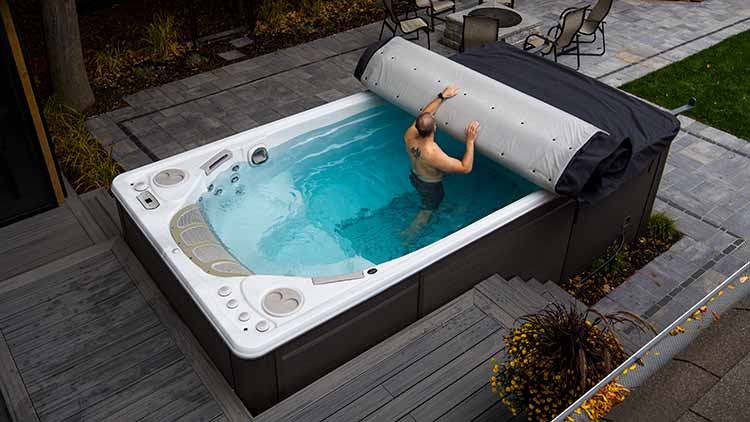

It’s never advisable to leave a swim spa or hot tub uncovered when not in use, the two reasons being:
- Heat will escape, thereby increasing power usage to maintain temperature,
- The water will be vulnerable to pollutants, i.e. bird droppings, leaves, etc.
Always replace your cover when your swim spa is not in use.
Roll-away covers (pictured above) are an option for some models that many owners find easier to operate.

